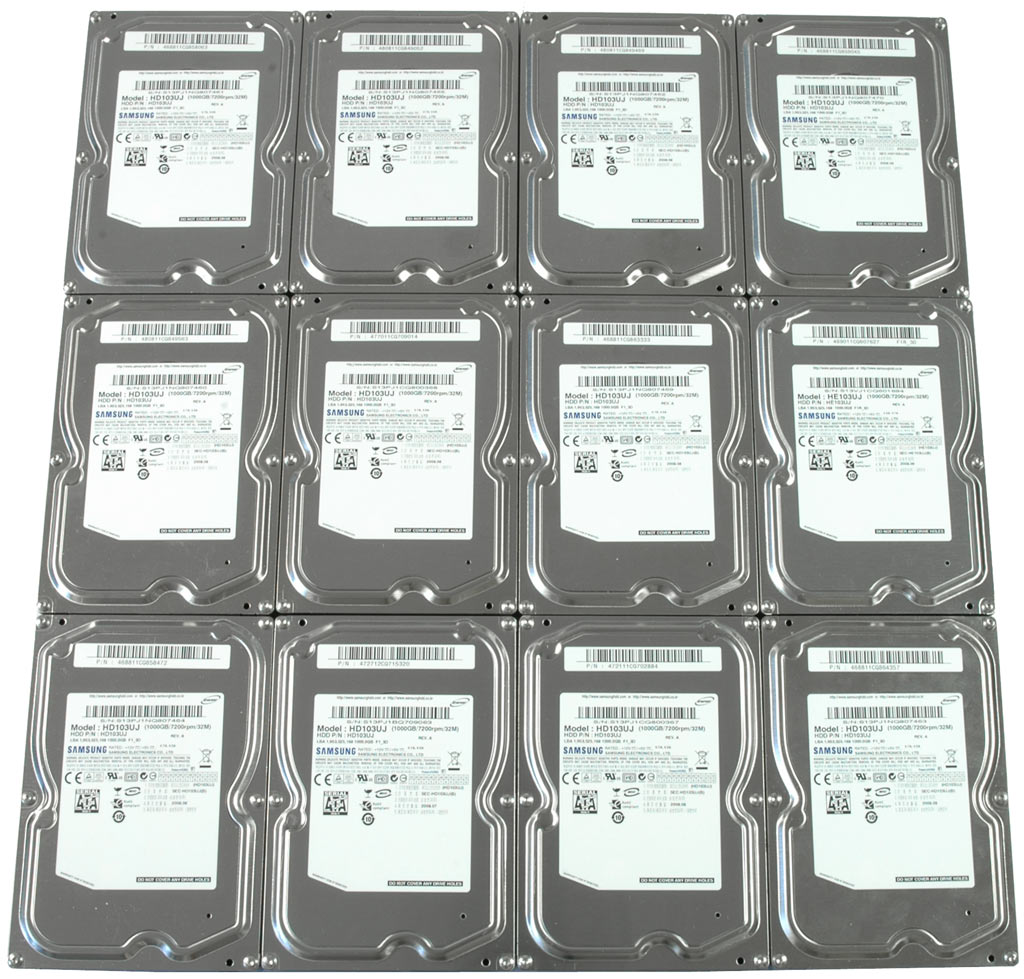10 TB for $1,000: Tom’s Hardware's Über RAID Array
Array And Controller Details
We wanted to build an array with at least a 10 TB capacity, and with 12 drives, we were able to reach a total gross capacity of 12 TB. We decided to run both RAID 0 for maximum performance and RAID 5 to balance performance with data protection. While a RAID 0 configuration distributes data evenly across all drives using so-called stripe sets, RAID 5 adds parity information on one of the drives. Parity is also distributed across the drives to avoid one drive becoming a parity bottleneck.
RAID 0
In RAID 0, the total capacity equals the capacity of one Spinpoint F1 drive times the number of drives. Each drive has a net capacity of 1,000 GB, if one kilobyte equals 1,000 bytes, or 931.32 GB if one kilobyte is defined as 1,024 bytes. The latter is the way Windows handles storage capacity. Twelve times this capacity results in 11,175.87 GB.
RAID 5
RAID 5 requires at least three hard drives, and it provides the total capacity of all array member drives minus one drive. This type of array will maintain data integrity in case one drive fails. If you want an array to remain operational with two failed drives, then you need to run RAID 6. For our test array, the total RAID 5 capacity was 10,244.54 GB.
Controller: Areca ARC-1680iX-20
We chose a 16-port combined SAS/SATA controller from Areca, the 20-port ARC-1680iX. The full-sized card is based on a x8 PCI Express interface and includes an Intel IOP348 processor at 1,200 MHz, which provides a good basis for serious XOR acceleration and RAID 5 performance. The card comes with a DDR2 DIMM socket and can hold anything between 512 MB and 4 GB; we used the default 512 MB module. Be sure to purchase ECC memory if you decide to install a larger cache capacity. Areca is among the few controller vendors to support RAID 6.
Get Tom's Hardware's best news and in-depth reviews, straight to your inbox.
This card comes with a network port, which exclusively serves as a enabler of out-of-band management. Hence it’s possible to configure the card via the built-in Web server independent from the host PC’s operating system. The 20 SAS ports are available through multi-lane connectors (4 internal, 1 external), which is why we used 4-to-1 SAS fanout cables to attach the Samsung drives. As you might recall, SAS is fully SATA-compatible thanks to STP, the SATA Tunneling Protocol.
Current page: Array And Controller Details
Prev Page Test Drive: 12 x Samsung Spinpoint F1 HD103UJ (1 TB) Next Page Test Setup, Access Time, Throughput


